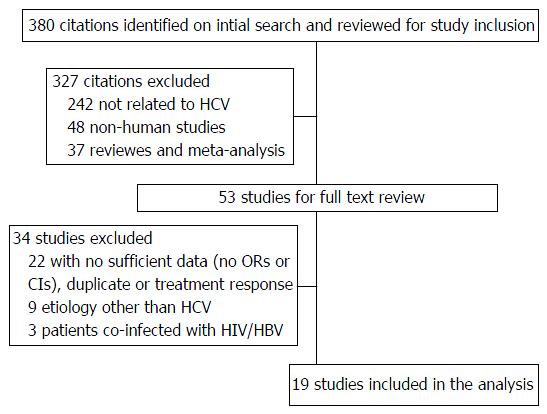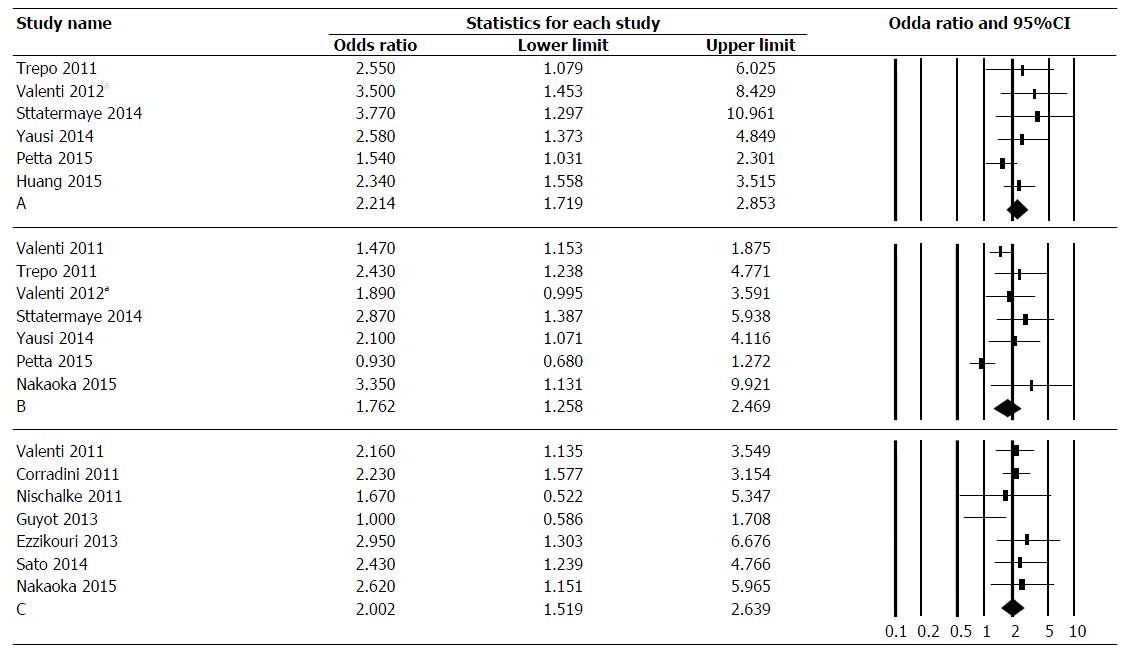Copyright
©The Author(s) 2016.
World J Hepatol. Dec 18, 2016; 8(35): 1584-1592
Published online Dec 18, 2016. doi: 10.4254/wjh.v8.i35.1584
Published online Dec 18, 2016. doi: 10.4254/wjh.v8.i35.1584
Figure 1 Attrition on literature search and study inclusion.
HCV: Hepatitis C virus; HBV: Hepatitis B virus; HIV: Human immunodeficiency virus.
Figure 2 Forest plots for analysis of chronic hepatitis C studies on the association of PNPLA3 polymorphisms GG vs CG and CC with fatty liver in (A), cirrhosis in (B), and hepatocellular carcinoma in (C).
The effect size is reported as odds ratio with 95%CI. The bottom line in “the statistics for each study” heading is the pooled effect size analyzed using the random effects model. OR greater than 1 denotes risk for the respective outcome or positive association, and OR less than 1 indicates a protective effect or negative association. The 95%CI not crossing 1 indicates a significant association. Valenti 2012a in panel (A) refers to reference[43], and in panel (B) refers to reference[14].
Figure 3 Forest plots for analysis of chronic hepatitis C studies on the association of PNPLA3 polymorphisms GG and CG vs CC with fatty liver in (A), and cirrhosis in (B).
The effect size is reported as odds ratio with 95%CI. The bottom line in the “statistics for each study” heading is the pooled effect size analyzed using the random effects model. OR greater than 1 denotes risk for the respective outcome or positive association, and OR less than 1 indicates a protective effect or negative association. The 95%CI not crossing 1 indicates a significant association.
- Citation: Salameh H, Masadeh M, Al Hanayneh M, Petros V, Maslonka M, Nanda A, Singal AK. PNPLA3 polymorphism increases risk for and severity of chronic hepatitis C liver disease. World J Hepatol 2016; 8(35): 1584-1592
- URL: https://www.wjgnet.com/1948-5182/full/v8/i35/1584.htm
- DOI: https://dx.doi.org/10.4254/wjh.v8.i35.1584











